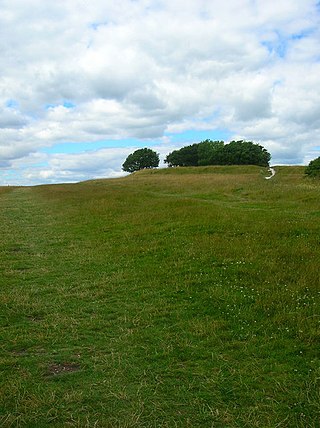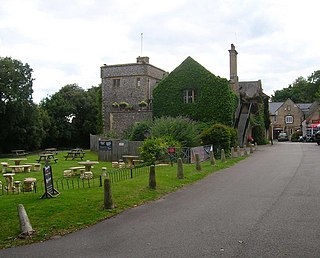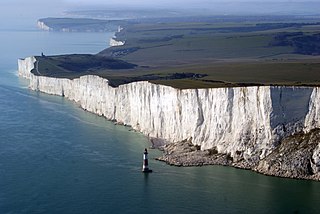
Highdown Gardens are a unique chalk garden set in the South Downs National Park on the western edge of the town of Worthing, close to the village of Ferring and the National Trust archaeological site Highdown Hill, in West Sussex, England. Overlooking the sea from the South Downs, they contain a collection of rare plants and trees, collectively a national collection. [1] The gardens are managed and maintained by Worthing Borough Council with free admission and relies on donations to maintain its collection for all to enjoy now and for the generations to come.
Contents
Created from a chalk quarry where there was little soil and unfavourable conditions for plant growth, the Chalk Garden at Highdown is the achievement of Sir Frederick Stern (1884–1967) and his wife, who purchased the 8.52 acres (3.45 ha) in 1909 and worked for 50 years to show that plants would grow on chalk. [2]
The gardens were created during a period when expeditions were going to China and the Himalayas collecting rare and interesting plants. Many of the original plants from the early collections are in the garden today, particularly plants collected by Reginald Farrer and Ernest Henry Wilson. [3]

After the death of Sir Frederick in 1967, aged 83, Lady Stern carried out his wishes and left the gardens in trust to Worthing Borough Council [4] in 1968.
Over the years historians such as Chris Hare and more recently Hamish MacGillivray from ACME Museum services have enabled the establishment of a clear timeline. West Sussex record Office were also instrumental in managing and archiving the vast collection of documents revealed through this heritage investigations.





National Heritage Lottery Fund:
From 2019 to 2021, Highdown has had an uplift, a well deserved improvement to celebrate the importance of this local treasure. This was made possible thanks to a considerable investment of over £1m, largely financed by the National Heritage Lottery Funds and Worthing Borough Council. The makeover included a set of restored glasshouses, an essential part of the plant heritage programme to preserve and share Highdown National Plant Collection.

The gardens and National plant Collection:

The gardens are home to a ‘living library’ of rare plants and trees adapted to live on chalk throughout the year. Many of the plants are from the original collection started by keen horticulturist Sir Frederick Stern in 1909.
The gardens has a fantastic plant and science heritage and seasonal highlights which visitors are encouraged to discover during their visit in the visitor centre as well as during the guided tour and on the Highdown Gardens website.
During spring and early summer there is a succession of flowering bulbs: snowdrops, crocus, anemones and daffodils, followed by paeonies and bearded iris.[ citation needed ].
Engagement
In the recent years, engagement resources have been developed by Creative Waves , Stem innovation, Figment Arts, Imprint Creative. Junior tree trail A plant hunter trail is free to download
The legacy:
The former head gardener bungalow has been upgraded and turned into a visitor centre to raise awareness on the importance of this botanical gem and enabling educational outreach projects. Inside you’ll find lots of information and resources. This includes some history about the gardens, details about the plants and educational resources for children and young people. Today, Highdown’s work is focused on preservation, education and recreation, providing a lasting legacy for future generations.
Find out about the gardens incredible history and listen to some memories.

The people
The gardens have been managed and maintained by head and senior gardeners all left their marks over various period of time: James Buckman, John Bassindale, Florence Holden, Ron Read, Chris Beardsley, Jo Hooper, Peter Wish, Gary Prescod and Peter Keefe.
Since reopening of the gardens, the collection is managed and curated by Alex New, supported by 4 full time craft gardeners and volunteers. Public events and activities take place in the gardens led by Custodian Gwenn Parker-Tregoat & Visitor Experience Manager Ellen Mascard.
Accessibility and how to find the gardens:
The garden is steep in parts. There is an accessible path, disabled parking bays and accessible toilet.

















